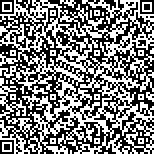下载中心
优秀审稿专家
优秀论文
相关链接
摘要

干球温度(气温)是地面气象观测中所要测定的常规要素之一.目前基于遥感数据获取该量的方法多采用线性拟合或直接应用遥感反演的温度近似代替干球温度,但是由于下垫面复杂,导致误差较大.本文提出用支持向量机(SVM)模型进行干球温度推算.选择广西省南宁市为研究区域,首先通过遥感反演温度与气象实测温度的对比,证明了利用遥感数据推算干球温度的可能性.然后,构建了针对干球温度的SVM推算模型.最后,尝试了分别使用表观亮温和遥感反演地温作为SVM模型的输入进行干球温度的推算.结果表明,SVM模型推算的干球温度与实测值更为接近,和传统方法相比,精度得到明显提高;且用表观亮温进行推算更为简单,更适合业务化的应用.
Dry-bulb temperature, which can represent the regional characteristics of thermal conditions, is one of the conventional meteorological elements measured over surfaces. Such measurement serves an important function in studying plant physiology, hydrology, the atmosphere, and the environment. Dry-bulb temperatures are usually calculated through linear fitting to original remote sensing data or approximate temperatures retrieved from remote sensing data. These methods are suitable for homogeneous areas with a stable atmospheric stratification and circulation pattern. However, a linear relation does not exist between surface temperature retrieved from remote sensing data and the actual dry temperature because of the limitations of algorithms and the complexity of the underlying surface. Dry-bulb temperatures cannot be calculated accurately with the use of traditional retrieval algorithms. Therefore, a support vector machine (SVM) model was proposed in this study to calculate dry-bulb temperatures.Nanning City was selected as the research area. First, the temperature retrieved from remote sensing data was compared with in situ data. The relations among brightness temperature, temperature retrieved from remote sensing data, and actual dry-bulb temperature were confirmed. Calculating dry-bulb temperature by remote sensing data was a reasonable approach. Second, the actual dry-bulb temperature in some stations and the corresponding temperatures retrieved from remote sensing data (at the same time and geographical location) were taken as modeling samples. The SVM prediction model with a strong learning capability and nonlinear processing capability was developed to retrieve dry-bulb temperatures. Finally, the dry-bulb temperature was calculated by using remote sensing brightness temperature and the temperature retrieved from remote sensing data as the input parameters of the SVM model.For the data obtained on May 12 and November 20, 2008, the absolute errors of the traditional method (using Ts linear translation with surface temperature retrieved from remote sensing data) to calculate the dry-bulb temperature are 2.050112 ℃ and 1.3437564 ℃; the absolute errors of SVM models of brightness temperature are 0.91915 ℃ and 0.40294 ℃; and the absolute errors of SVM models of surface temperature are 0.73802 ℃ and 0.55002 ℃. The precision of the SVM models is higher than that of traditional methods.The conclusions are as below: (1) Actual dry-bulb temperatures, brightness temperatures, and surface temperatures retrieved by remote sensing are well correlated. Using remote sensing data to predict dry-bulb temperatures is a feasible approach. As determinative factors of regional change for dry-bulb temperature are complex, relations among dry-bulb temperatures, brightness temperatures, and surface temperatures are not linear. Using traditional linear methods may result in large biases. The SVM model with nonlinear processing capacity is more suitable than traditional methods for calculating dry-bulb temperature. (2) The absolute errors of the SVM model are more reasonable and smaller than those of traditional methods. (3) The results of the SVM model, which used brightness temperature and retrieval surface temperature as input parameters, are comparable. The retrieval process for surface temperature is complex; therefore, brightness temperature can be taken as input for SVM directly instead of retrieving surface temperature. (4) Given that November is a non-flood season in Guangxi, nonadiabatic heating of heat flux equation is less affected by convection and turbulence. The main factor for dry-bulb temperature is surface thermal radiation; the absolute error for the November data is significantly smaller than that of May even when using the same SVM models.

